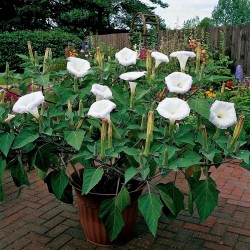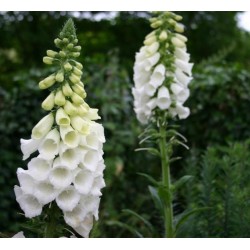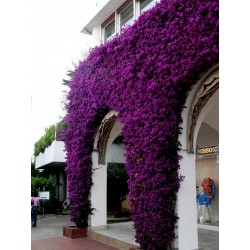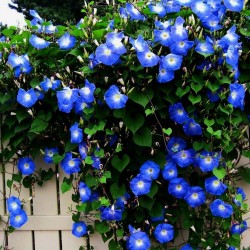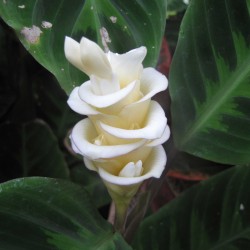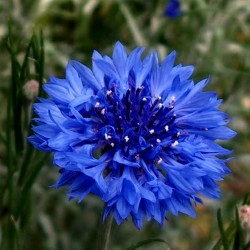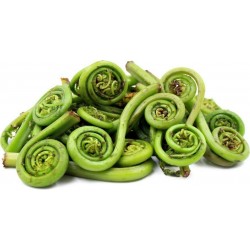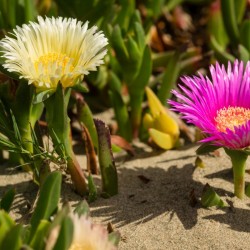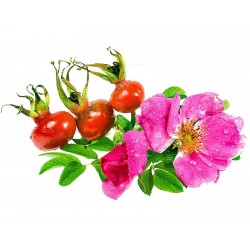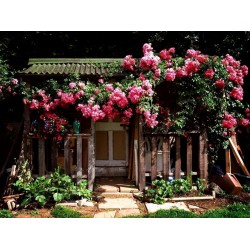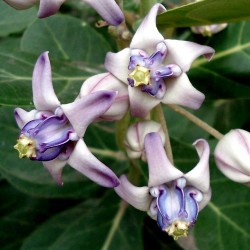
This plant is edible
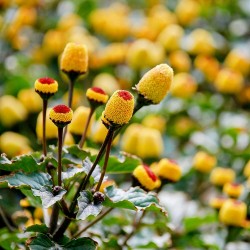
Toothache Plant - Paracress...
Price
€1.95
SKU: MHS 70
Seeds Gallery Com,
5/
5
<!DOCTYPE html>
<html>
<head>
<meta http-equiv="Content-Type" content="text/html; charset=UTF-8" />
</head>
<body>
<h2><strong>Toothache Plant - Paracress Seeds (Acmella oleracea)</strong></h2>
<h2><span style="color: #ff0000;"><strong>Price for Package of 20 seeds.</strong></span></h2>
<p>Acmella oleracea is a species of the flowering herb in the family Asteraceae. Common names include toothache plant, paracress, and electric daisy. In Brazil, it is called jambu. Its native distribution is unclear, but it is likely derived from a Brazilian Acmella species. It is grown as an ornamental and it is used as a medicinal remedy in various parts of the world. A small, erect plant, it grows quickly and bears gold and red inflorescences. It is frost-sensitive but perennial in warmer climates.</p>
<p><strong>Culinary uses</strong></p>
<p>For culinary purposes, small amounts of shredded fresh leaves are said to add a unique flavour to salads. Cooked leaves lose their strong flavour and may be used as leafy greens. Both fresh and cooked leaves are used in dishes such as stews in northern Brazil, especially in the state of Pará. They are combined with chilis and garlic to add flavor and vitamins to other foods.</p>
<p>The flower bud has a grassy taste followed by a strong tingling or numbing sensation and often excessive salivation, with a cooling sensation in the throat. The buds are known as "buzz buttons", "Szechuan buttons", "sansho buttons", and "electric buttons". In India, they are used as flavoring in chewing tobacco.</p>
<p>A concentrated extract of the Spilanthes plant identified as Jambu is used as a flavoring agent in many countries worldwide. EFSA and JECFA reviewed a feeding study in rats conducted by Moore et al and both authorities recognized that the no adverse effect level for spilanthol was 572 mg/kg b.w./day, yielding a safe dose of spilanthol of 1.9 mg/kg b.w./day, or 133.5 mg/70-kg male/day, 111 mg/58-kg female/day, or 38 mg/20-kg child/day.</p>
<p>The use of jambu extract as a food flavor is described as having an odor of citrus, herbal, tropical or musty odor, and its taste can be pungent, cooling, tingling, numbing, or effervescent. Thus, as described,[9] the flavor use of jambu extract includes the ability induce a mouth-watering sensation in the oral cavity and the ability to promote the production of saliva. Spilanthol, the major constituent of jambu extract, is responsible for the perception of a mouth-watering flavor sensation, as well as the ability to promote salivation as a sialogogue, perhaps through its astringent action or its pungent taste in the oral cavity.</p>
<p><strong>Cultivation</strong></p>
<p>This plant prefers well-drained, black (high organic content) soil. If starting outdoors, the seeds should not be exposed to cold weather, so start after last frost. Seeds need direct sunlight to germinate, so should not be buried.</p>
<p><strong>Medicinal uses</strong></p>
<p>A decoction or infusion of the leaves and flowers is a traditional remedy for stammering, toothache, and stomatitis.</p>
<p>An extract of the plant has been tested against various yeasts and bacteria and was essentially inactive. It has been shown to have a strong diuretic action in rats.</p>
<p>As a bush plant used for treating toothache, the analgesic effect of the Spilanthes plant has been attributed to the presence of constituents containing an N-isobutylamide moiety, such as spilanthol, a substance that has been found to be an effective sialogogue, an agent that promotes salivation. Spilanthol is absorbed trans-dermally and through the buccal mucosa. Spilanthol may activate TRPA1, a specific transient receptor potential (TRP) ion channel in the oral cavity. In addition to capsaicin, allyl isothiocyanate, and cinnamaldehyde, spilanthol is also reported to affect the catecholamine nerve pathways present in the oral cavity that promote the production of saliva,[10] which is responsible for its ability to induce a mouth-watering sensation when used as a flavor (and associated with the tingling or pungent flavoring sensation in some individuals).</p>
<p>Since 2000, there are several medicinal activities reported on Acmella oleracea that are highlighted in several journals are mentioned in the table below.</p>
<p><strong>Active chemicals</strong></p>
<p>The most important taste-active molecules present are fatty acid amides such as spilanthol, which is responsible for the trigeminal and saliva-inducing effects of products such as jambú oleoresin, a concentrated extract of the plant.[23] It also contains stigmasteryl-3-O-b-D-glucopyranoside and a number of triterpenes. The isolation and total synthesis of the active ingredients have been reported.</p>
<p><strong>Biological pest control</strong></p>
<p>Extracts were bioassayed against yellow fever mosquito (Aedes aegypti) and corn earworm moth (Helicoverpa zea) larvae. The spilanthol proved effective at killing mosquitoes, with a 24-hour LD100 of 12.5 µg/mL, and 50% mortality at 6.25 µg/mL. The mixture of spilanthol isomers produced a 66% weight reduction of corn earworm larvae at 250 µg/mL after 6 days.</p>
<p><strong>Jambú oil</strong></p>
<p>Spilanthol is extracted from the flowers, leaves and stem from jambu.</p>
<div>
<table border="1" cellspacing="0" cellpadding="0">
<tbody>
<tr>
<td colspan="2" valign="top" width="100%">
<h3 align="center"><span style="color: #008000;">Sowing Instructions</span></h3>
</td>
</tr>
<tr>
<td valign="top" nowrap="nowrap">
<p align="center"><span style="color: #008000;"><strong>Propagation:</strong></span></p>
</td>
<td valign="top">
<p align="center"><span style="color: #008000;">Seeds</span></p>
</td>
</tr>
<tr>
<td valign="top" nowrap="nowrap">
<p align="center"><span style="color: #008000;"><strong>Pretreat:</strong></span></p>
</td>
<td valign="top">
<p align="center"><span style="color: #008000;">0</span></p>
</td>
</tr>
<tr>
<td valign="top" nowrap="nowrap">
<p align="center"><span style="color: #008000;"><strong>Stratification:</strong></span></p>
</td>
<td valign="top">
<p align="center"><span style="color: #008000;">0</span></p>
</td>
</tr>
<tr>
<td valign="top" nowrap="nowrap">
<p align="center"><span style="color: #008000;"><strong>Sowing Time:</strong></span></p>
</td>
<td valign="top">
<p align="center"><span style="color: #008000;">all year round</span></p>
</td>
</tr>
<tr>
<td valign="top" nowrap="nowrap">
<p align="center"><span style="color: #008000;"><strong>Sowing Depth:</strong></span></p>
</td>
<td valign="top">
<p align="center"><span style="color: #008000;">Needs Light to germinate! Just sprinkle on the surface of the substrate + gently press</span></p>
</td>
</tr>
<tr>
<td valign="top" nowrap="nowrap">
<p align="center"><span style="color: #008000;"><strong>Sowing Mix:</strong></span></p>
</td>
<td valign="top">
<p align="center"><span style="color: #008000;">Coir or sowing mix + sand or perlite</span></p>
</td>
</tr>
<tr>
<td valign="top" nowrap="nowrap">
<p align="center"><span style="color: #008000;"><strong>Germination temperature:</strong></span></p>
</td>
<td valign="top">
<p align="center"><span style="color: #008000;">20-25°C</span></p>
</td>
</tr>
<tr>
<td valign="top" nowrap="nowrap">
<p align="center"><span style="color: #008000;"><strong>Location:</strong></span></p>
</td>
<td valign="top">
<p align="center"><span style="color: #008000;">bright + keep constantly moist not wet</span></p>
</td>
</tr>
<tr>
<td valign="top" nowrap="nowrap">
<p align="center"><span style="color: #008000;"><strong>Germination Time:</strong></span></p>
</td>
<td valign="top">
<p align="center"><span style="color: #008000;">1 - 8 weeks</span></p>
</td>
</tr>
<tr>
<td valign="top" nowrap="nowrap">
<p align="center"><span style="color: #008000;"><strong>Watering:</strong></span></p>
</td>
<td valign="top">
<p align="center"><span style="color: #008000;">Water regularly during the growing season</span></p>
</td>
</tr>
<tr>
<td valign="top" nowrap="nowrap"> </td>
<td valign="top">
<p align="center"><br /><span style="color: #008000;"><em>Copyright © 2012 Seeds Gallery - Saatgut Galerie - Galerija semena. </em><em>All Rights Reserved.</em></span></p>
</td>
</tr>
</tbody>
</table>
<p> </p>
</div>
<p><span style="font-size: 10pt;"> </span></p>
</body>
</html>
MHS 70 (20 S)





